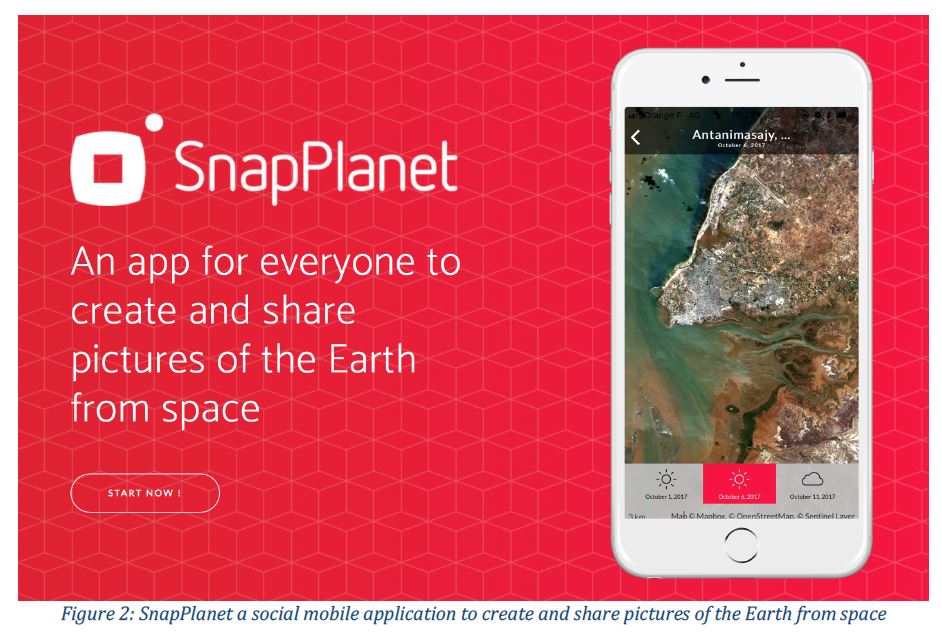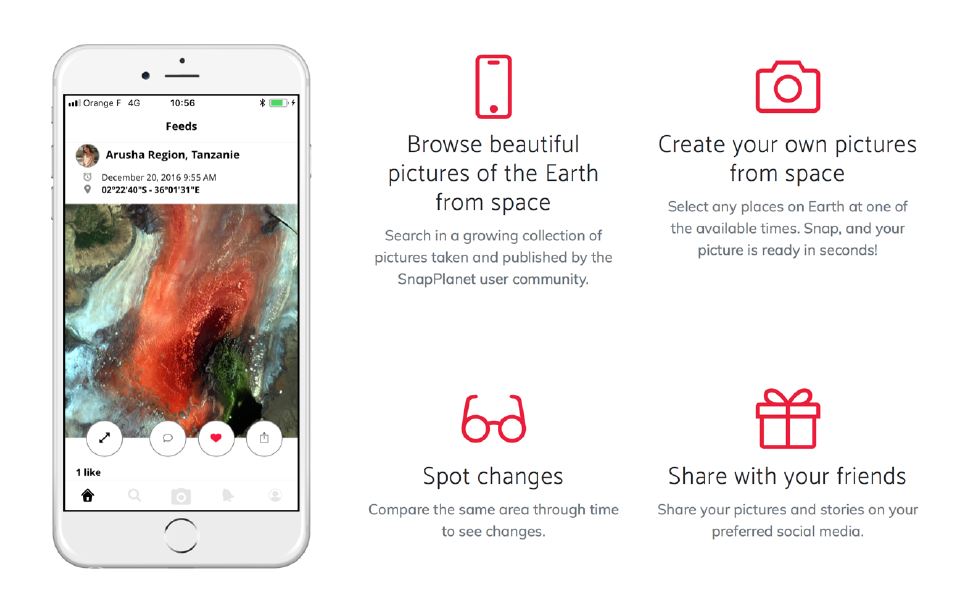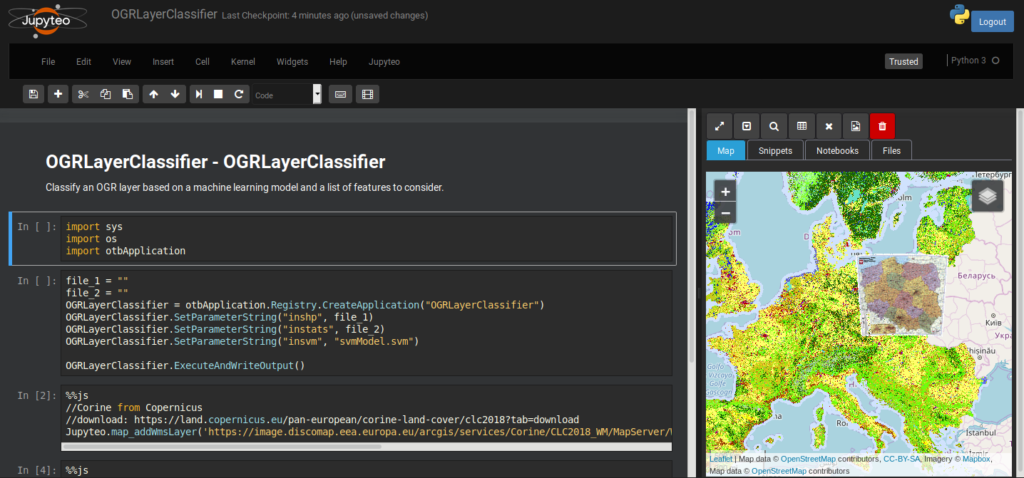
Description
jeobrowser is a consultancy and software development SME specializing in geographical information systems and Earth Observation field. It was founded in 2010 by Jérôme Gasperi and it is based in Toulouse, France.
For years jeobrowser has been developing cutting edge applications in the EO domain. It’s open source EO catalog and semantic search engine (resto) is at the core of several projects including the French Sentinel Data Processing Center (PEPS), the THEIA Land Data Center and the CREODIAS catalog. On the client side, the rocket web application won the 2016 “European EO product of the year” award from EARSC.
jeobrowser is involved in the development of the 2016 Copernicus Masters ESA App Challenge winner – SnapPlanet. SnapPlanet offers citizens and storytellers a new medium to educate and communicate about the social, economic and environmental issues that we face today on a global in a more impactful and trustworthy way by providing a social mobile app to easily access, process and share Earth Observation imagery.
Applications
iTag
Semantic enhancement of Earth Observation data
iTag is a web service for the semantic enhancement of Earth Observation products, i.e. the tagging of products with additional information about the covered area, regarding for example geology, water bodies, land use, population, countries, administrative units or names of major settlements.
resto
REST search engine for geOspatialized data
resto is a metadata catalogue and a search engine dedicated to geospatialized data.
Originally, it’s main purpose it to handle Earth Observation satellite imagery but it can be used to store any kind of metadata localized in time and space. resto search API is compliant with the CEOS OpenSearch Best Practice Document and is mentioned in ESA’s « Exploitation Platform Common Core Components » as the closest implementation of a catalogue component according to the requirements specified in ESA's Exploitation Platform Open Architecture.
resto have been used in several projects including:
• CREODIAS
• Rocket - The Earth in your pocket
• The French Sentinel Data Processing center, PEPS
• The French Space Agency, THEIA land data center
• The Polish EO Data finder
• Remote Sensor Technology Center of Japan, EPIC project
• Sentinel Australia Regional Access
• Sinergise sentinel-hub OpenSearch API
• ESA's Food Security Thematic Exploitation Platform
• ESA's Forestry Thematic Exploitation Platform
rocket
The Earth in your pocket
rocket is a Web application that provides a unique entry point to search, visualize and download Earth Observation products from various catalogs.
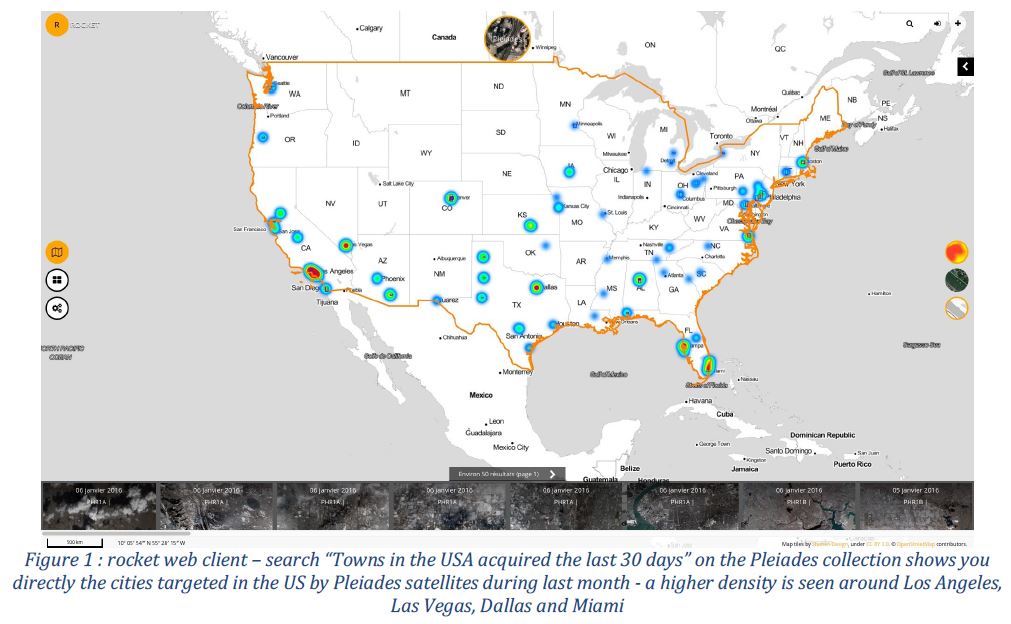
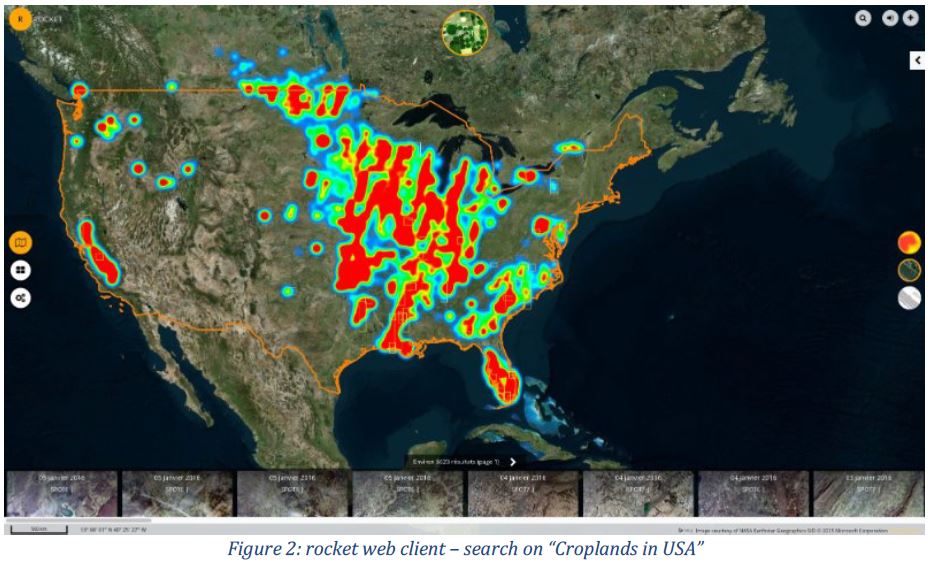
SnapPlanet
An app for everyone to create and share pictures of the Earth from Space
Download the app here.
« As the very first Earth observation social network, SnapPlanet brings EO data to the mass market in a fashionable and easy to use way. Amongst other benefits, the application provides its users the opportunity to explore, post, share and print the latest and best Sentinel-2 imagery. SnapPlanet combines the ever-increasing availability of Earth observation images with the advantages of a social network for everyone. »
Dr Thomas Beer
Copernicus Policy Coordinator
European Space Agency (ESA)
SnapPlanet is a social network with the aim to harness the use of Earth observation data to address individual, societal, environmental and economic needs through user- and community-oriented services. SnapPlanet is a mobile application in which users can choose a location around the world at a given time, “snap” it, and share the precise pictures of places taken from satellites with their followers. SnapPlanet provides this service for free, using Sentinel-2 imagery. The medium-term objective is to extend this service to include commercial sub metric imagery. Combined with high user demand and the increasing acquisition capabilities of satellites and drones, this will make selfies from space possible at the cost of a few euros. By providing citizens with access to EO images, SnapPlanet will be a catalyst of innovation and the creation of new EO databased services.
